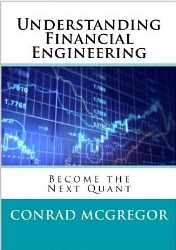- Does a Low VIX Signal Danger? : My Guest Appearance In Barrons
Yes, a respectable publication agreed to run my VIX-related infomercial. I guested the Barrons Striking Price column yesterday. Remember all the way back to April 2010? Spring was in the air, the Mets were still mathematically alive in the National League East race, and the VIX (the Chicago Board Options Exchange volatility index) was near […]
- Giant Meltage
OK, just one comment on the Giant Debacle. Probably. Slightly lost in the public lynching of Matt Dodge and his inability to punt a ball to the sidelines AFTER THE GIANTS HAD ALREADY BLOWN THE BIG LEAD was the onsides kick the Giants let the Eagles recover with ease. Really the line of thought that […]
- Expiring Monthly December 2010 Issue Recap
A reminder that the December issue of Expiring Monthly: The Option Traders Journal was published yesterday and is available for subscribers to download.
This month’s issue has a feature article from Mark Sebastian on the future of options exchanges. On a related subject, Mark Longo interviews Gary Katz, President and CEO of the International Securities Exchange (ISE). Additional subjects covered in the magazine include how market makers use volatility to update their quotes, delta hedging, analyzing opening gap tendencies, payment for order flow, directional vs. non-directional strategies, the role of luck and skill in trading, and a review of Ron Ianieri’s recent options book.
I contribute two articles to the December issue. Unintentionally blurring zoomorphism with mythology, one article is based on a trade I call “the Minotaur” while the other has earned the name of “the Swan Catcher.” The Minotaur turns out to be a VIX-VXX pairs trade and here I embark on a proof-of-concept approach. The Swan Catcher trade also represents something of a bottoms-up approach to developing options strategies. In part one of a two-part series, I seek a way to structure options positions to profit from extreme moves in the market, without losing too much money while one waits for these events to occur.
As is now my habit, I have reproduced a copy of the Table of Contents for the December issue below for those who may be interested in learning more about the magazine. Thanks to all who have already subscribed. For those who are interested in subscription information and additional details about the magazine, you can find all that and more at http://www.expiringmonthly.com/.
- The “Cheap” VIX?
Is it really that cheap? I mean check out this graph here of 10 Day realized volatility in SPY over the past 3 months. It hit 5 on Friday. Anyway, please click thru to InvestorPlace for the balance of the post.
- Chart of the Week: Historical Volatility Plummets in Seasonal Swoon
‘Tis the season for the annual holiday effect in which historical volatility (HV) has a strong tendency to plunge and drag implied volatility down with it. This is a subject I have tackled on a number of occasions in the past (see links below) and is really just a longer variant of what I call calendar reversion – the tendency of the VIX to fall an extra 1% or so on Fridays due to market makers adjusting prices ahead of the weekend. The lack of volatility all boils down to the same root cause: fewer trading days during the 30 calendar day window specified by the VIX (and implied volatility in general) means there are fewer opportunity for stocks to stray significantly from the path projected by efficient markets, standard deviations and the rest of the normalcy regime.
As of Friday’s close the S&P 500 index had a 10-day historical volatility of 5.5, which is the lowest reading since May 2007. In this week’s chart of the week below, I have elected to show the 10-day historical volatility of the Russell 2000 small cap index (RUT), which traditionally has higher volatility than the SPX and is also more susceptible to the winds of economic change and uncertainty. As the chart shows, 10-day historical volatility (white line) sits at a two-year low and has helped to pull the implied volatility (red line) of the index down below 20. Note that last week the CBOE Russell 2000 Volatility Index (RVX) dipped as low as 19.55 and is threatening to drop below the 19.00 level for the first time since June 2007.
After the first of the year I expect to see the holiday effect magically disappear and HV, IV and volatility indices begin to reflect a more accurate view of investor expectations.

[source: Livevol.com]Disclosure(s): Livevol is an advertiser on VIX and More - VIX-Piracy Time!
Zerohedge chimes in on our beloved VIX. Since he has about 4 billion times my audience, I feel some sort of civic duty to elaborate on a few of his points. On April 15, the VIX contango hit its heretofore steepest of the year. What happened immediately afterward was a peak in the market followed […]
Today’s Option Blogs December 22, 2010
Posted in Markets.
Tagged with blogs, Derivatives, Options, skew, trading, Volatility.
Comments Off on Today’s Option Blogs December 22, 2010
By SurlyTrader – December 22, 2010



